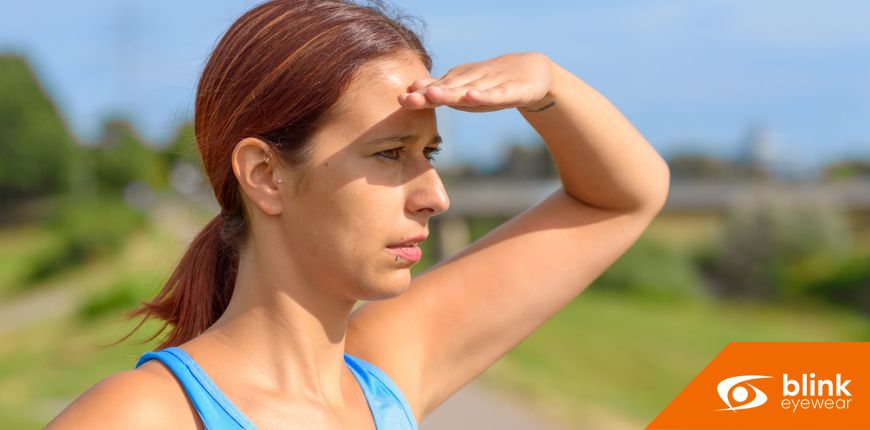
Myopia, commonly known as nearsightedness, is a prevalent vision problem that affects a significant portion of the population worldwide. In recent years, there has been growing concern about the increasing prevalence of myopia, particularly among children and young adults. While genetics and lifestyle factors play a role in the development of myopia, researchers have discovered a fascinating link between outdoor time and myopia control. Specifically, studies have shown that spending more time outdoors, especially in natural sunlight, can help prevent the onset and progression of myopia. The research behind this link explores why spending time in the great outdoors may be a simple yet effective way to combat the growing myopia epidemic.
Myopia: Take It Outside
Myopia, or nearsightedness, is a condition characterized by the inability to see distant objects clearly while maintaining good near vision. It has become a global health concern, with an estimated 2.6 billion people projected to be affected by myopia by 2020. The prevalence of myopia has been on the rise in recent years, particularly in urban areas and among younger populations. While genetics play a significant role in myopia development, lifestyle factors have also been implicated in its progression.
One lifestyle factor that has gained attention in myopia control is outdoor time, specifically exposure to natural sunlight. Several studies have found a strong association between increased outdoor time and a reduced risk of myopia development. The exact mechanisms behind this link are not yet fully understood, but researchers believe that sunlight may play a crucial role.
Sunlight is the primary natural source of vitamin D, an essential nutrient for maintaining bone health. However, vitamin D synthesis is not the only benefit of sunlight exposure. Sunlight also stimulates the release of dopamine in the retina, a neurotransmitter that helps regulate eye growth. Dopamine acts as a natural inhibitor, slowing down the elongation of the eyeball, which is a key factor in the development of myopia. Thus, spending time outdoors in natural sunlight may provide a protective effect against myopia.
A groundbreaking study conducted in China further supported this hypothesis. The study involved more than 1,900 children aged six to seven, who were randomly assigned to either an additional 40 minutes of outdoor time at school or regular classroom activities. After three years, the children who spent more time outdoors had a significantly lower incidence of myopia compared to their peers. This finding suggests that increasing outdoor time, even in a school setting, can have a tangible impact on myopia control.
While the exact duration of outdoor time needed for myopia prevention is still uncertain, experts recommend spending at least two hours a day in natural light. This can be achieved through activities such as sports, walking, or simply enjoying nature. Encouraging children to engage in outdoor activities not only promotes overall health and well-being but also provides a potential safeguard against myopia development.
It's important to note that outdoor time is just one piece of the puzzle in myopia control. Other factors, such as proper visual ergonomics, reduced near-work activities, and regular eye examinations, are also vital components of a comprehensive approach. However, incorporating more outdoor time into daily routines can be a simple yet effective step toward reducing the risk of myopia.
Myopia Support At Blink Eyewear
The increasing prevalence of myopia is a significant public health concern, particularly among younger individuals. While genetics and lifestyle factors contribute to myopia development, recent research highlights the role of outdoor time, specifically exposure to natural sunlight, in myopia control. Spending more time outdoors and engaging in activities that allow for sunlight exposure may help prevent the onset and progression of myopia. By embracing the great outdoors, we can not only improve our overall well-being but also potentially protect our vision for a lifetime.
Early intervention is key in controlling myopia progression. By addressing myopia during childhood and adolescence, we can significantly reduce the risk of high myopia and associated eye conditions later in life. Ortho-k lenses, low-dose atropine, and lifestyle modifications provide effective strategies for myopia control. By prioritizing regular eye exams, promoting outdoor activities, and limiting screen time, we can work together to safeguard the vision of future generations. Let us take proactive measures now to ensure a brighter and clearer future for all.
If you are experiencing the symptoms of Myopia or have any questions or concerns about your overall eye health, our team of optometrists at Blink Eyewear can help. With three convenient locations in Crowfoot in NW Calgary, West Springs in SW Calgary, and Creekside in NW Calgary, Blink Eyewear can offer you great optometry services throughout the city. To book an appointment with Blink Eyewear, call 1-403-516-2292 or fill out the online contact form.
FAQ
Q: What causes myopia?
A: Nearsightedness is caused by the shape of the cornea and typically has a genetic component as it often appears in multiple members of a family. The condition usually begins to show signs during childhood, often getting progressively worse until stabilizing around age 20. There may also be environmental factors that contribute to myopia, such as work that requires focusing on close objects for an extended period of time and spending too much time indoors.
Q: How does nearsightedness differ from farsightedness?
A: In myopia, or nearsightedness, the cornea is typically longer than usual, so light that refracts images onto the retina falls in front of the retina, causing distant objects to appear blurry, while close objects can be seen normally.
In hyperopia, on the other hand, the eye is shortened or the cornea is flatter than normal, which will refract the light behind the retina so that objects will look blurry, while typically objects at a distance remain clear.
Q: Does myopia become worse over time?
A: Myopia usually begins in childhood and may progress into young adulthood. Although it usually stabilizes until the age of 20, it may worsen slightly with age, as with many vision conditions.